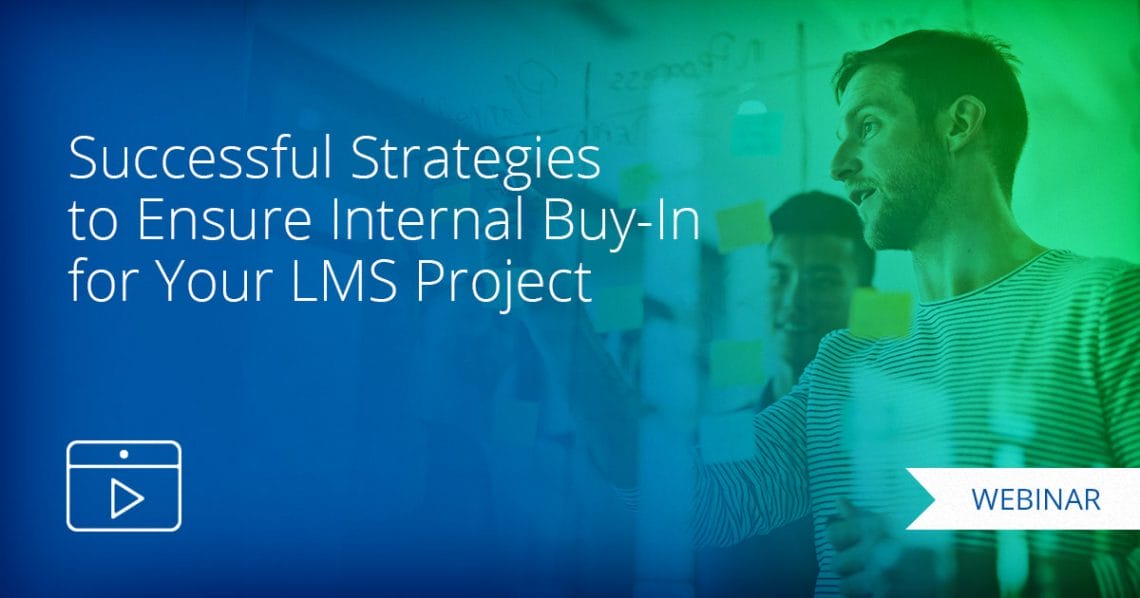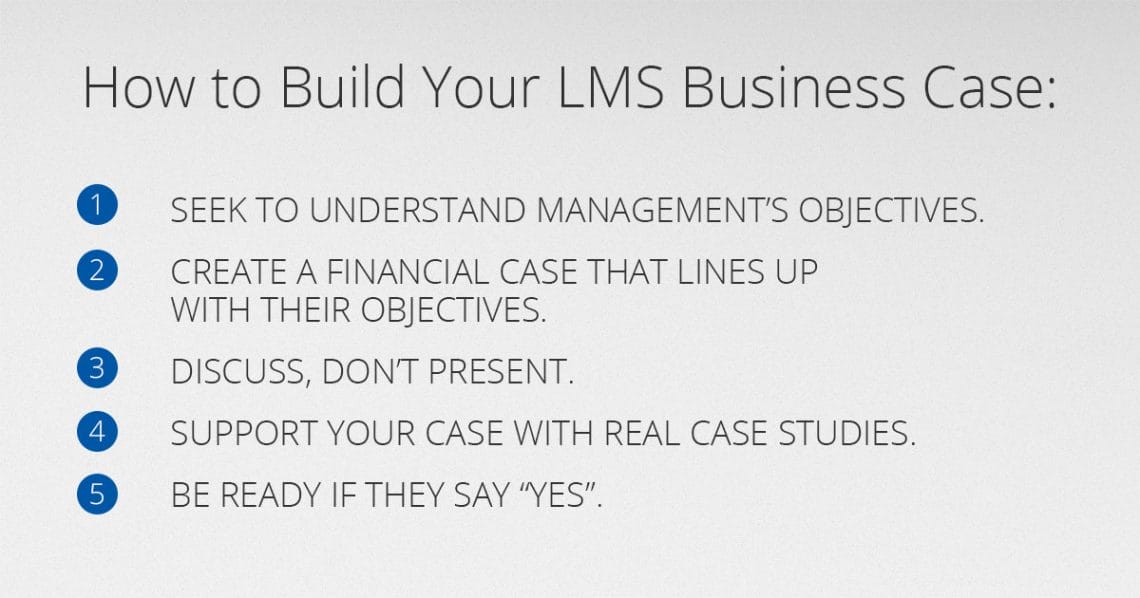
Successfully make the case that it’s time to upgrade your learning management system
A state-of-the-art learning management system (LMS) can help organizations overcome many of the learning and development challenges that arise in a particular industry, including fast onboarding, maintaining compliance, tracking learning progress, and more. However, sometimes your executive team won’t immediately see the full value of a learning technology investment.
To successfully convince upper management, you’ll need to build a business case that will gain internal buy-in for an LMS solution. Although your business case should be tailored to your particular organization’s learning needs, the process of putting together a business case is relatively uniform across industries. Be sure to address the specific objectives of your executive team and be upfront about the time it takes to experience ROI.
At a high-level, here are the steps you’ll need to go through to build your LMS business case.

Steps to Building Your LMS Business Case
1. Seek to understand management’s objectives.
Your ability to deliver a compelling business case for learning technology hinges on how well you structure your argument to resolve the chief challenges and priorities of your audience. Understanding their collective and individual goals will help you present a case that meets their needs.
2. Create a financial case that lines up with their objectives.
Work backwards from the main objectives of your executive team. If revenue is the main objective, make your case based on revenue. Be as thorough as possible.
3. Discuss, don’t present.
You’re likely going to have to have a meeting (or several) to examine your business case. It’s important that these meetings facilitate a two-way discussion. Start by asking questions that seek to understand what they are looking to achieve. Then, transition into your business case by offering to show them how they can meet those objectives with learning technology.
4. Support your case with real case studies.
This will help you answer the potential question: “This all sounds good in theory. How do you know it will work?”. Find case studies that outline LMS success at similar companies who are in similar industries. (You can find a number of Docebo Case Studies here.)
5. Be ready if they say “yes”.
Have your high-level plan ready, an overview of the next steps, timeframes, and required resources. Even with the green light from management, selecting an LMS can be a long and tedious process and it’s important that you’re ready to face any challenges that may arise.
To learn more about what you need to know to build the business case and get internal commitment to an LMS, join us for our live webinar, “Successful Strategies to Ensure Internal Buy-In for Your LMS Project”. In this one-hour presentation, Brandon Hall Group’s Principal Analyst David Wentworth and Docebo CRO Alessio Artuffo will cover all the essentials of getting internal LMS buy-in.
Register for the webinar now!
